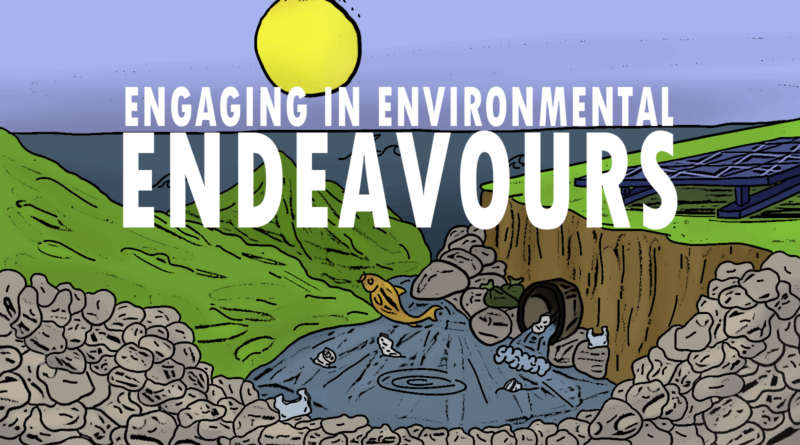Environmental NGOs you should know about: The Ocean Cleanup
And while diving deep or barely scratching the surface, this third organisation collects our trash with a purpose. This article is the last of a three-part series of articles where we, a group of five Rhetoric Minor students from the RUG, present to you three organisations working to help the environment and the people in it.
Poseidon’s Greatest Ally: The Ocean Cleanup
How would you feel if one day you were given the chance to scuba dive in one of the most beautiful waters on Earth, but instead of admiring the vast number of fish species, all that meets the eye is unrecycled bottles, straws, used wrappers, dirty bags, worn-out containers, every possible piece of manmade plastic trash? Plastic that has been collecting in the rivers and oceans around the world for decades. This is what Boyan Slat, the founder of The Ocean Cleanup saw on his trip to Greece 10 years ago. He wanted to do something about it when he realised no one had made serious attempts to combat this issue.
The Ocean Cleanup is a non-profit organization devoted to developing advanced technologies to rid the oceans of plastic. They aim to clean up 90% of ocean plastic pollution by 2050. Boyan’s original plan that he presented at a TEDx meeting in Delft in 2012 was to anchor a 100-km long system to the seabed where it can be placed to collect the plastic. Over the years this concept changed into a fleet of around 60 autonomous free-drifting systems. Currently The Ocean Cleanup is working on a new system, called System 002.
Starting The Ocean Cleanup
The beginnings of The Ocean Cleanup were humble. Boyan was still maintaining his aerospace engineering studies alongside planning out his passion project. However, after six months he took a leap of faith and fully committed to founding The Ocean Cleanup, doing so with a mere €300 as initial capital. The dream of clean oceans was one stroke closer.
“Then one night in March 2013, things changed,” says Joost Dubois, director of communications of The Ocean Cleanup. The video of the TEDx presentation had gained media traction. “It spread to hundreds of thousands of people. The idea went viral.” The views flooded in, and within a couple days the organization managed to recruit a team as well as crowdfunding $90,000. The organization could finally dive in deep.
Projects in the Works
So what are the projects that The Ocean Cleanup is working on? Currently, their main marine project is their second ocean system, “System 002”. The team is focused on the design phase in order to become operational by 2021. Apart from being autonomous and energy neutral, the cleanup system will be upscaled, all with the help of lessons learned from System 001. Once a fleet of systems is released, it is projected to remove 50% of the plastic from the Great Pacific Garbage Patch.
As for their riverine project, the Interceptors function to halt the vicious flow of new plastics, preventing them from staining our beautiful blue oceans, while also keeping the ecosystems healthy. This is done with a barrier leading the trash plastic onto a conveyor belt which collects it in on-board storage, with a capacity of up to 50 m3. Indonesia, Malaysia, and the Dominican Republic are benefiting from the Interceptor’s deployments, with further plans for expansion to Vietnam, Thailand, Jamaica, and L.A. County. The Interceptor is being prepared for an upgrade, with a new generation in production. Improvements involve a redesign, engineered to allow for optimized manufacturing and efficient assembly. Despite their great durability, The Ocean Cleanup has aimed “to tackle the 1000 most polluting rivers in five years from [the Interceptors] roll out”, and hopes this technology will play a part in achieving their overall goal of 90% plastic-free oceans by 2050.
The Ocean Cleanup has also managed to recycle the plastic collected from the Great Pacific Garbage Patch, giving it new value by creating sunglasses out of it. To maintain transparency in the market, the team has worked with DNV GL to verify the source of the plastic, striving for a standard throughout the market. DNV GL has been able to determine that the plastics used in the development of the sunglasses have a 95% origin from the Great Pacific Garbage Patch. Each pair of sunglasses also has a QR code in case it is lost, in order for their owner to be able to retrieve them, rather than having them discarded and returning to its origin. They intend to keep finding new reinventions for the collected plastic.
The Pandemic and a Final Note
The current COVID-19 pandemic has had an effect on everyone, and the organization is no exception. “Interceptor deployments have been delayed or disrupted, the launch of our first product was presented completely digitally, and some of our research missions have been put on hold”, says Dubois. Despite all of this, their resoluteness remains strong as they overcome each challenge. It has been made evident that even when life is being put on hold, with waves of lockdowns and travel restrictions, the plastic pollution problem continues to thrive. This has only motivated the organization to keep combating the issue.
If you are feeling too overwhelmed by the scale of the endeavours you want to pursue, keep in mind what The Ocean Cleanup has to say: “Don’t trust anyone that tells you something cannot be done! Remember that Big Problems require Big Solutions.”
Op-ed written by Andreea Pavel, Piotr Kaczmarek, Tom Dragt

